Building Treecard from 0 → 1
Product design, Research, Design system
Designing a sustainable banking experience
I joined Treecard as the founding designer, stepping into a team with a few initial flows created by a freelance designer. Treecard’s mission was to help users make a daily environmental impact with minimal effort, starting with our core offering: a wooden, tree planting debit card in the U.S.
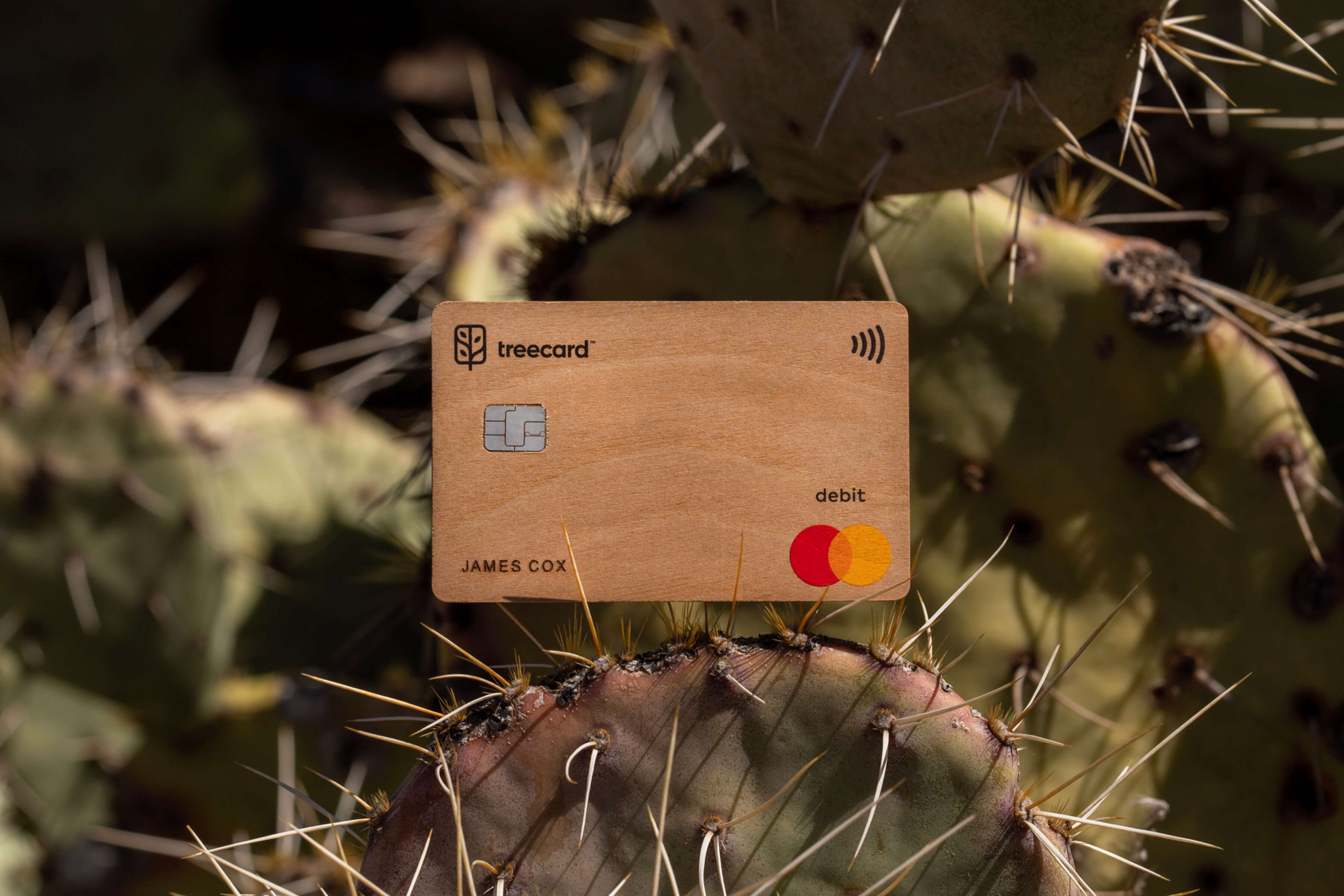
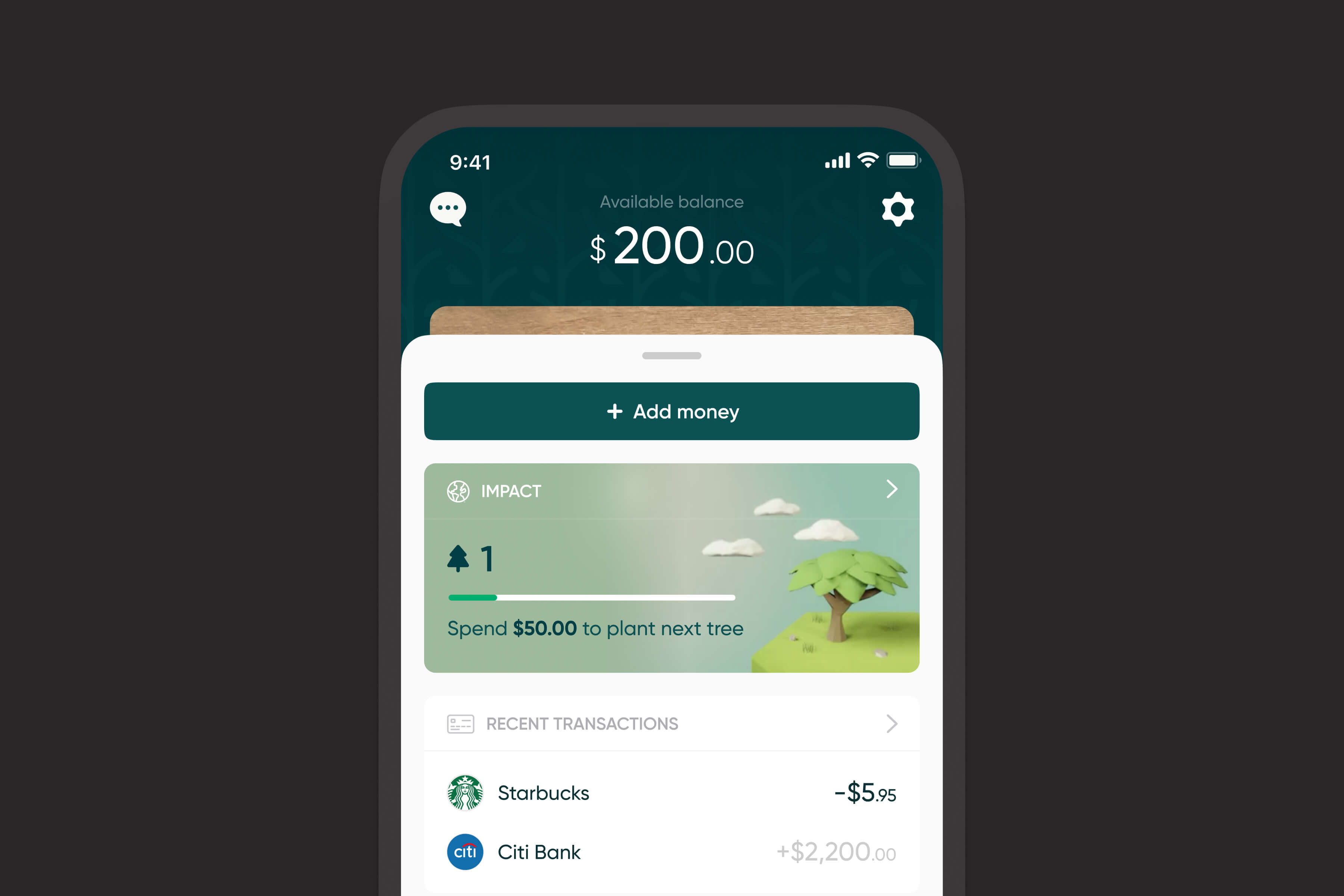
Defining and researching the problem
When I joined the project, the team had already defined the core problem: How can we empower users to make a meaningful impact on the planet in their daily lives, without requiring significant lifestyle changes?
My role was to build on this foundation by analysing the existing research and ensuring the design solutions addressed this challenge effectively:
- Synthesised findings from prior user interviews to deeply understand why users felt their individual efforts were insignificant.
- Identified key friction points in the user journey that made it harder for users to feel their actions were impactful.
- Researched industry benchmarks and competitor products to uncover opportunities for differentiation and innovation.
“Anything I do just feels like a drop in the ocean”
Users felt their individual efforts to fight climate change were insignificant, and as a result, questioned whether their actions were even worth doing.
“It’s hard to have an impact, I don’t have time”
Fighting climate change felt overwhelming to users, requiring a steep learning curve or significant effort/time that they don’t have day-today.
“I don’t know if I’m even making a difference”
Users struggled not seeing the results of their actions, leading to a sense of futility, distrust in the process and ultimately giving up on trying.
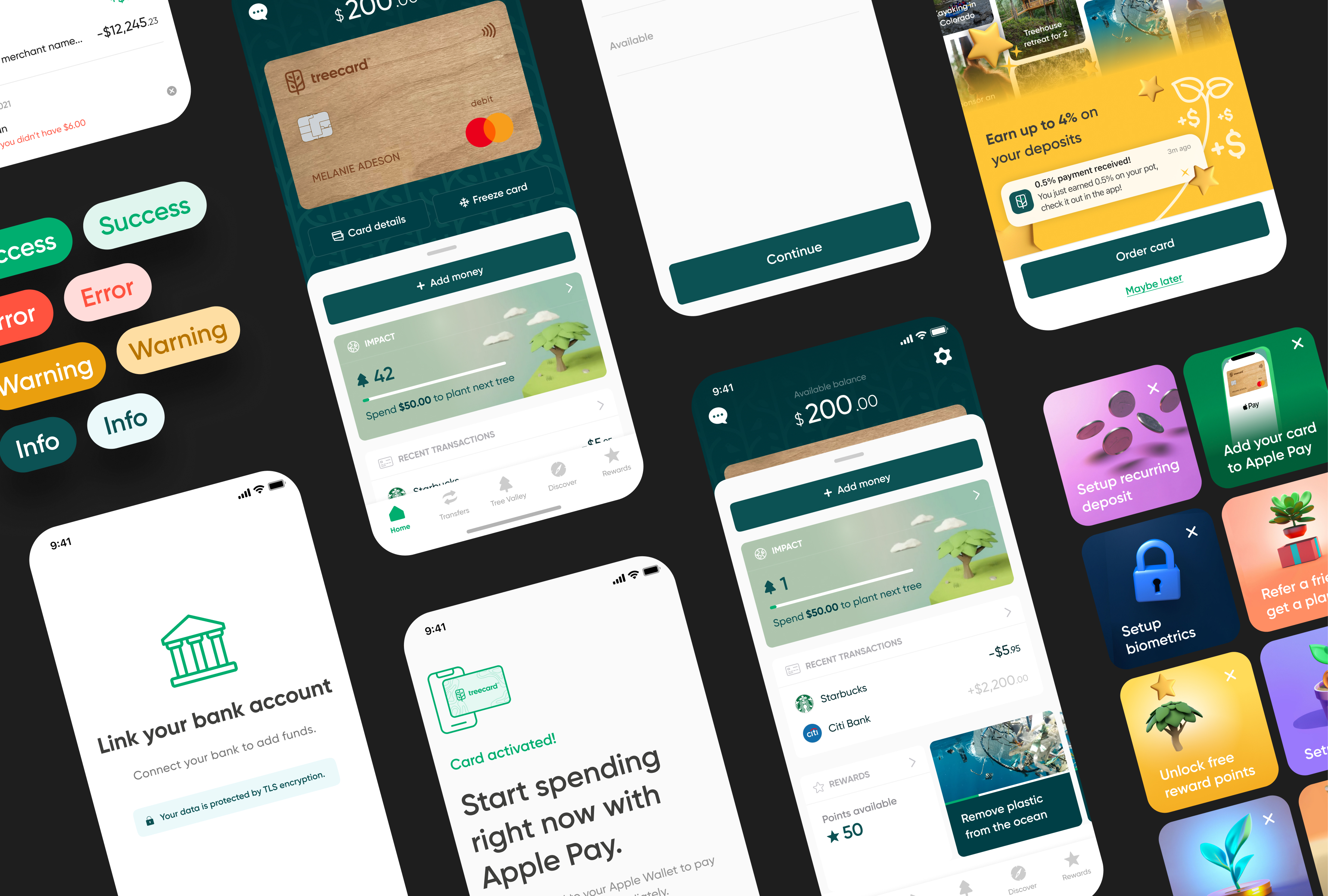
Forming a hypothesis
We made assumptions that by making it effortless for users to create a positive impact (without requiring significant changes to their daily routines), we could turn the product into a no-brainer.
By tying something planet positive like tree planting, to an existing action people already do, it makes it incredibly easy to have an impact without having to think.
Our vision was to create a world where:
- Users can make an impact without even thinking about it.
- The volume of users performing these daily actions leading to real, measurable impact.
- Users can see the tangible results of their contributions and feel motivated to continue.
This approach mirrors the success of Ecosia, search engine and our tree planting partner, which has achieved massive adoption with over 20M active users globally.

The wooden debit card
Everyday spending is often passive, making it ideal for aligning with our hypothesis. By linking spending to tangible environmental impact, we created a simple, compelling value proposition.
The wooden debit card also sparked curiosity, acting as a natural conversation starter and driving organic virality. Combined with the clear model (spend $50, plant a tree), this boosted awareness and adoption effortlessly.
As solo designer, I owned the end-to-end design process.
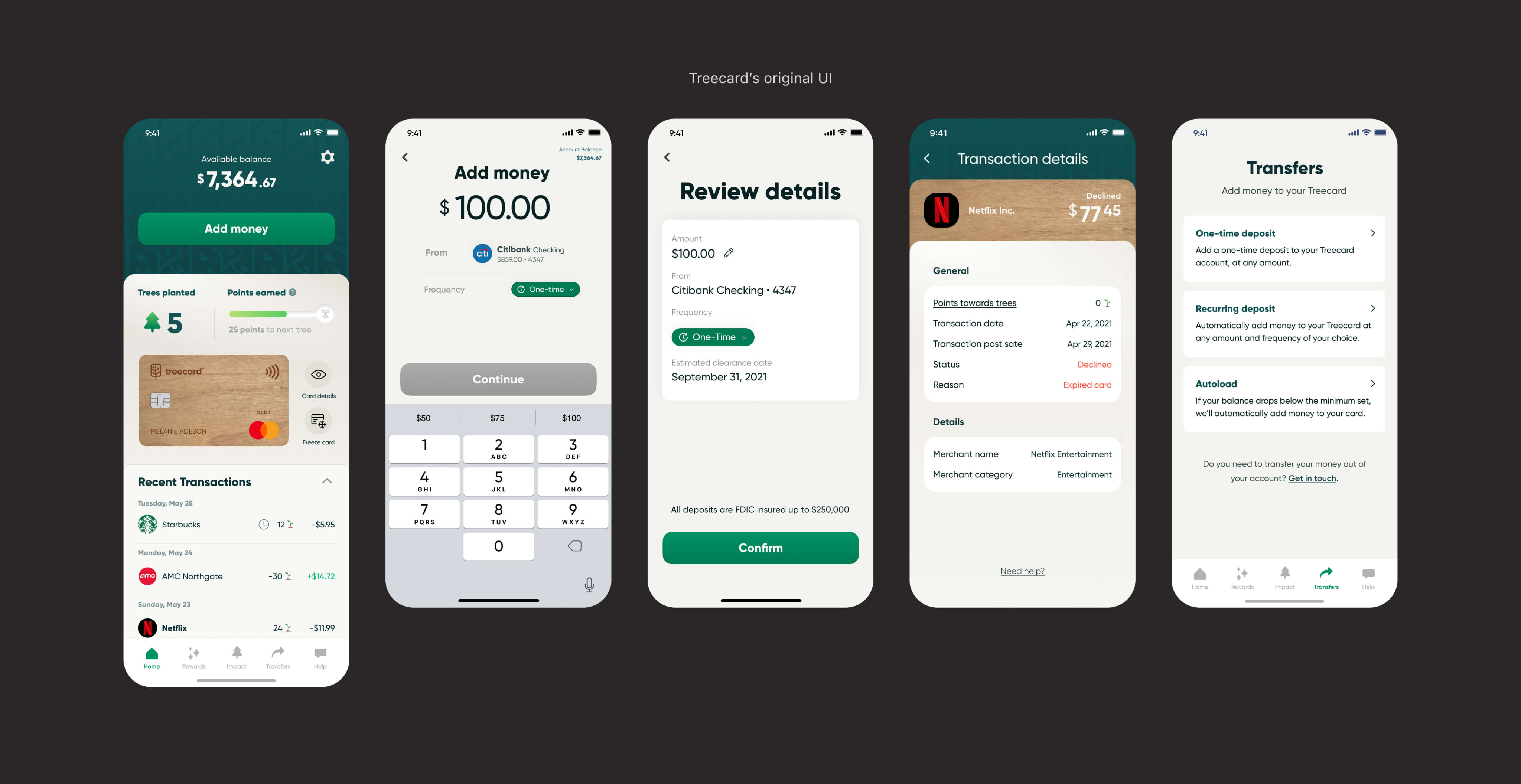
Streamlining the MVP for impact
When I joined Treecard, the initial UI (created by freelancers) was functional but messy. It had inconsistent design patterns, unclear flows, and unnecessary questions that created friction for users. To move quickly, we kept this design for the MVP, focusing on fast release and learning.
I simplified the flow, cutting it down to the essentials to guide users through more efficiently. I worked closely with product and engineering to align on priorities and roll out improvements, ensuring a smoother, more user-friendly experience.
Banking features
We created core banking features to support payment functionality; adding, sending, and receiving money; as well as spend tracking tools to help users monitor transactions.
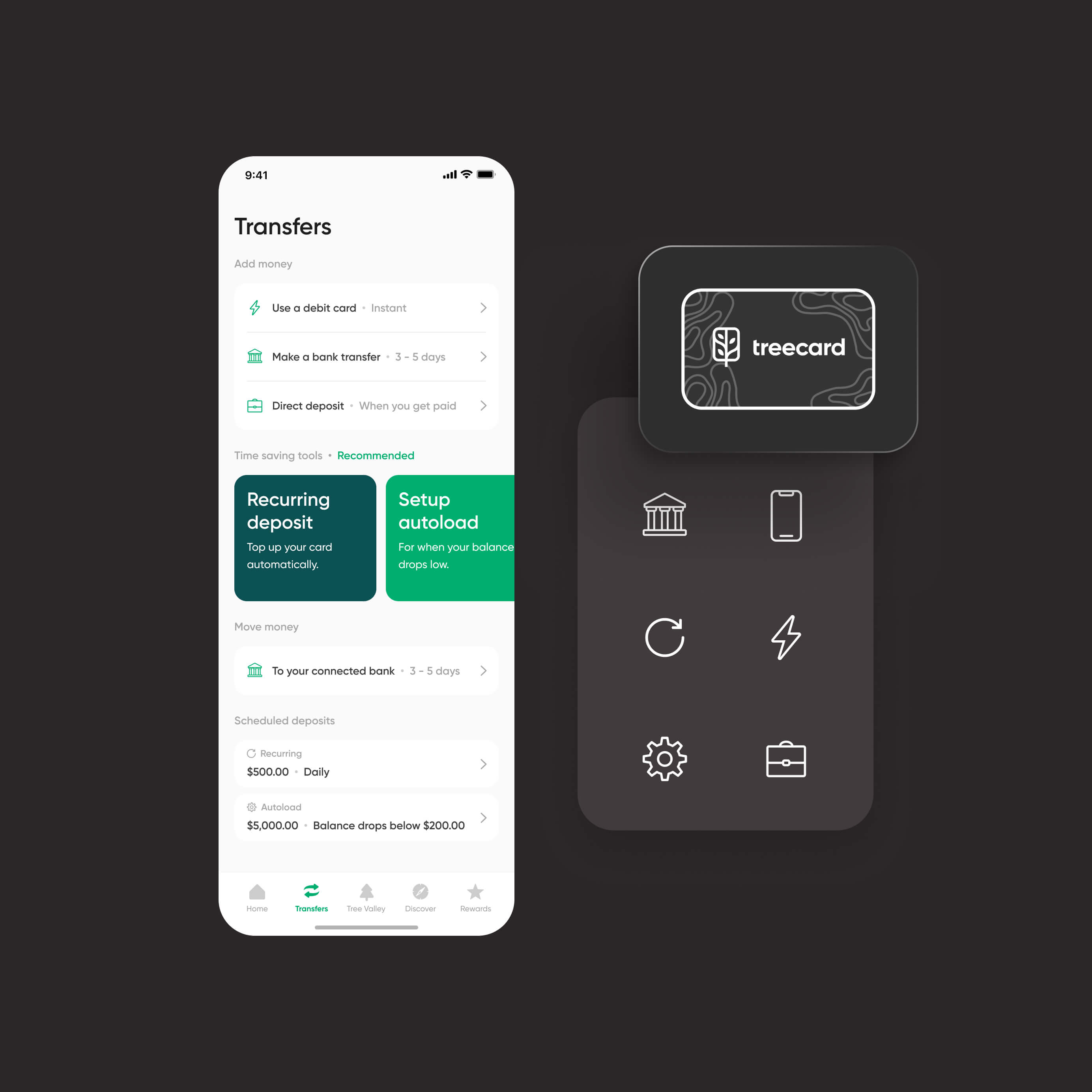
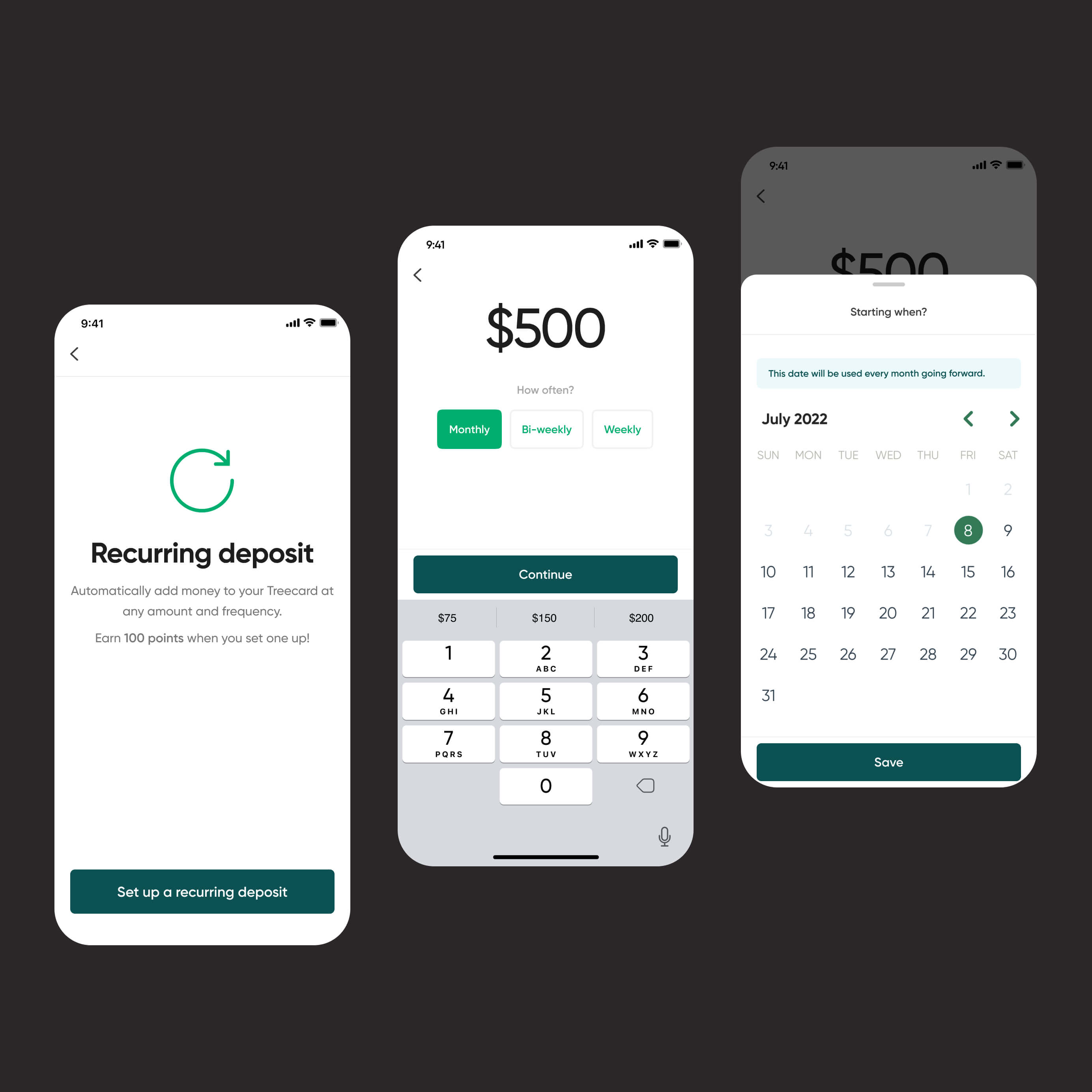
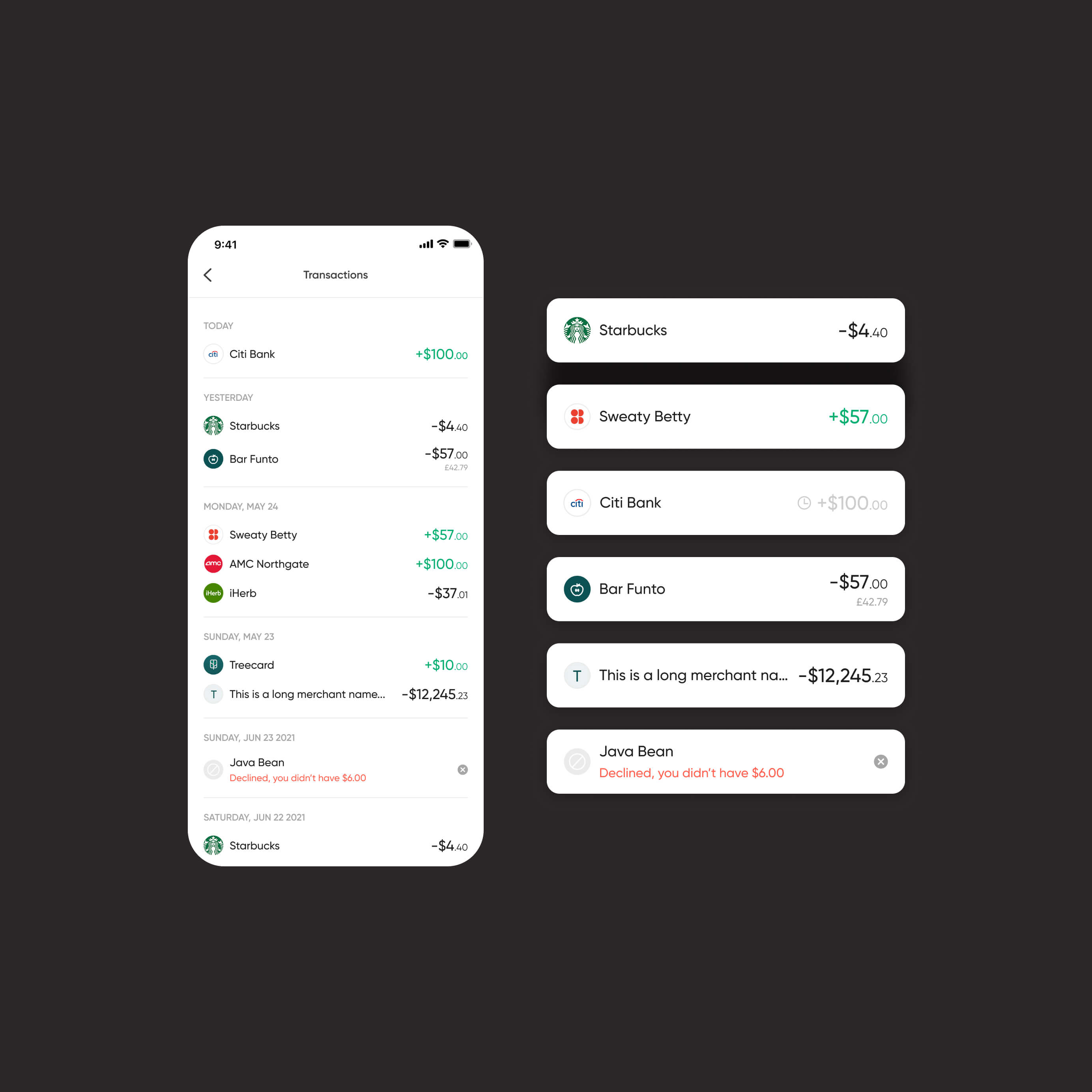
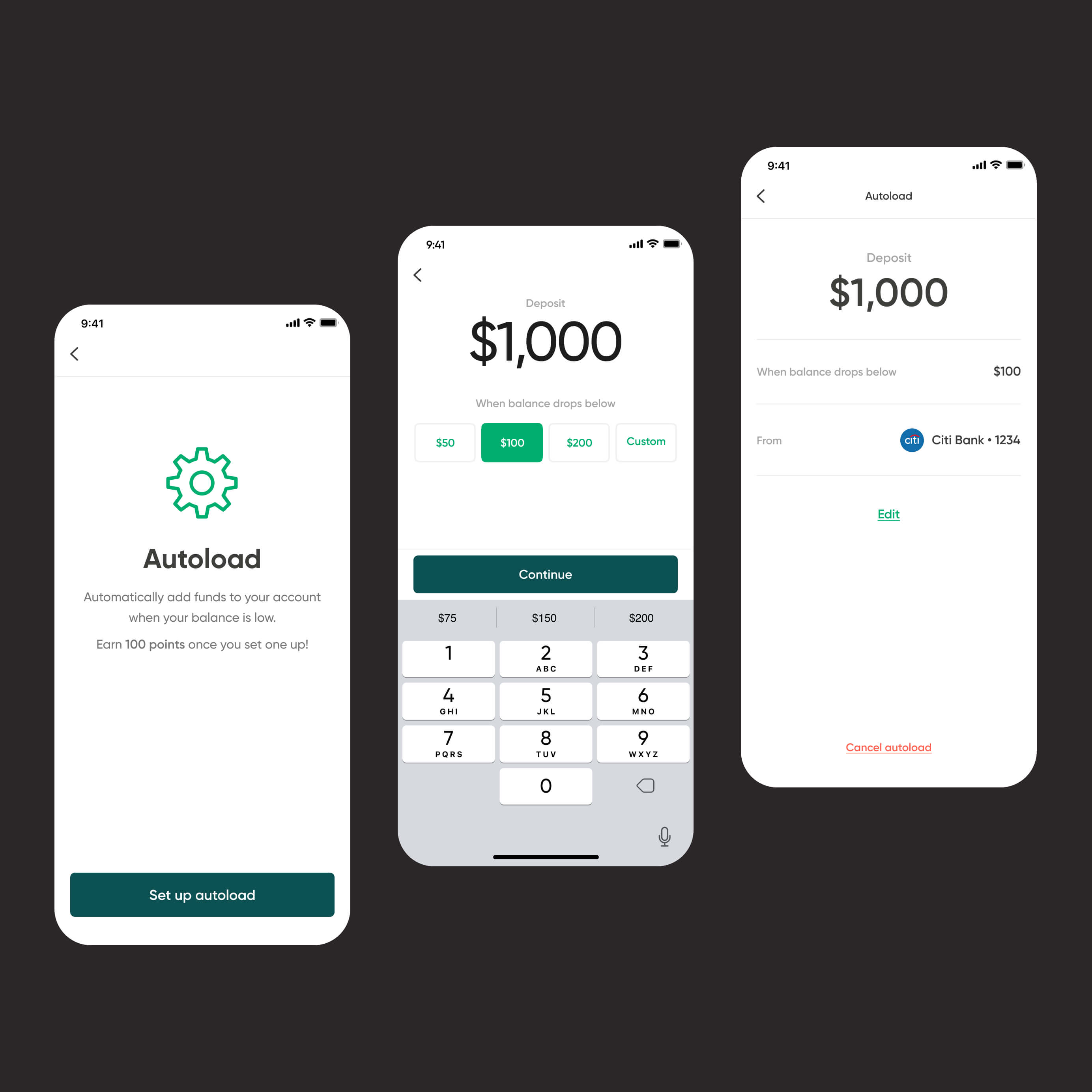
Onboarding
Developed and heavily tested user-friendly onboarding flows, including KYC compliance.

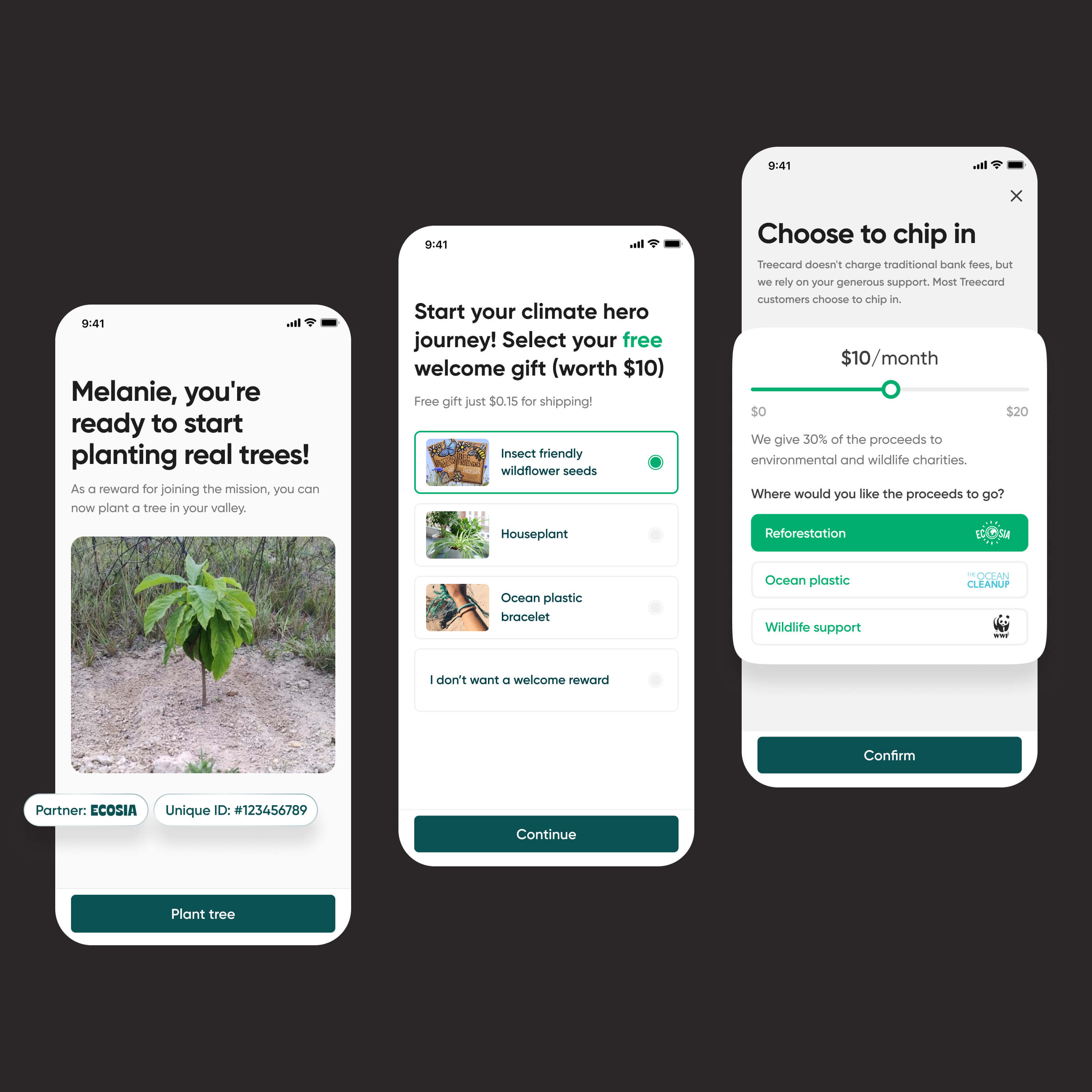
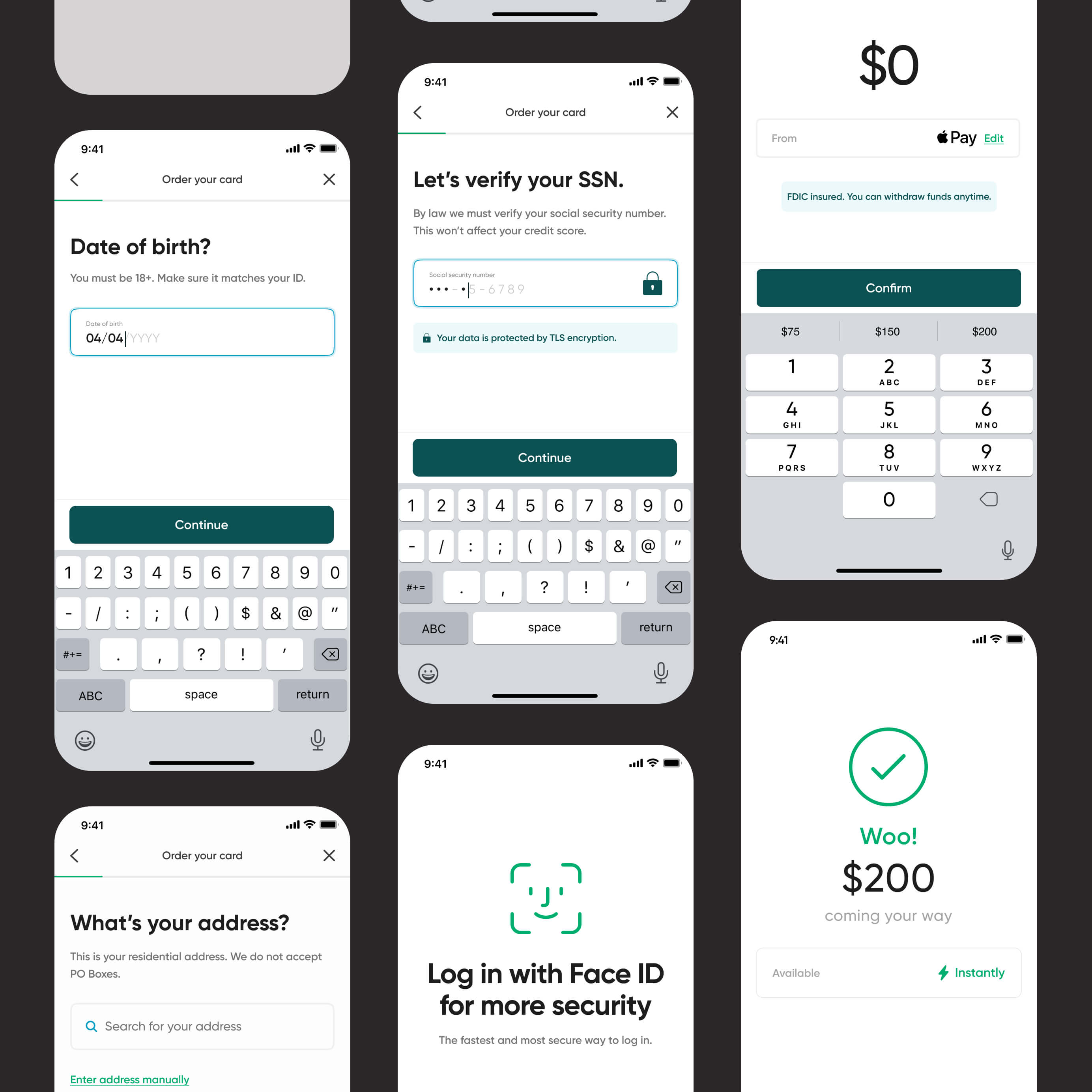
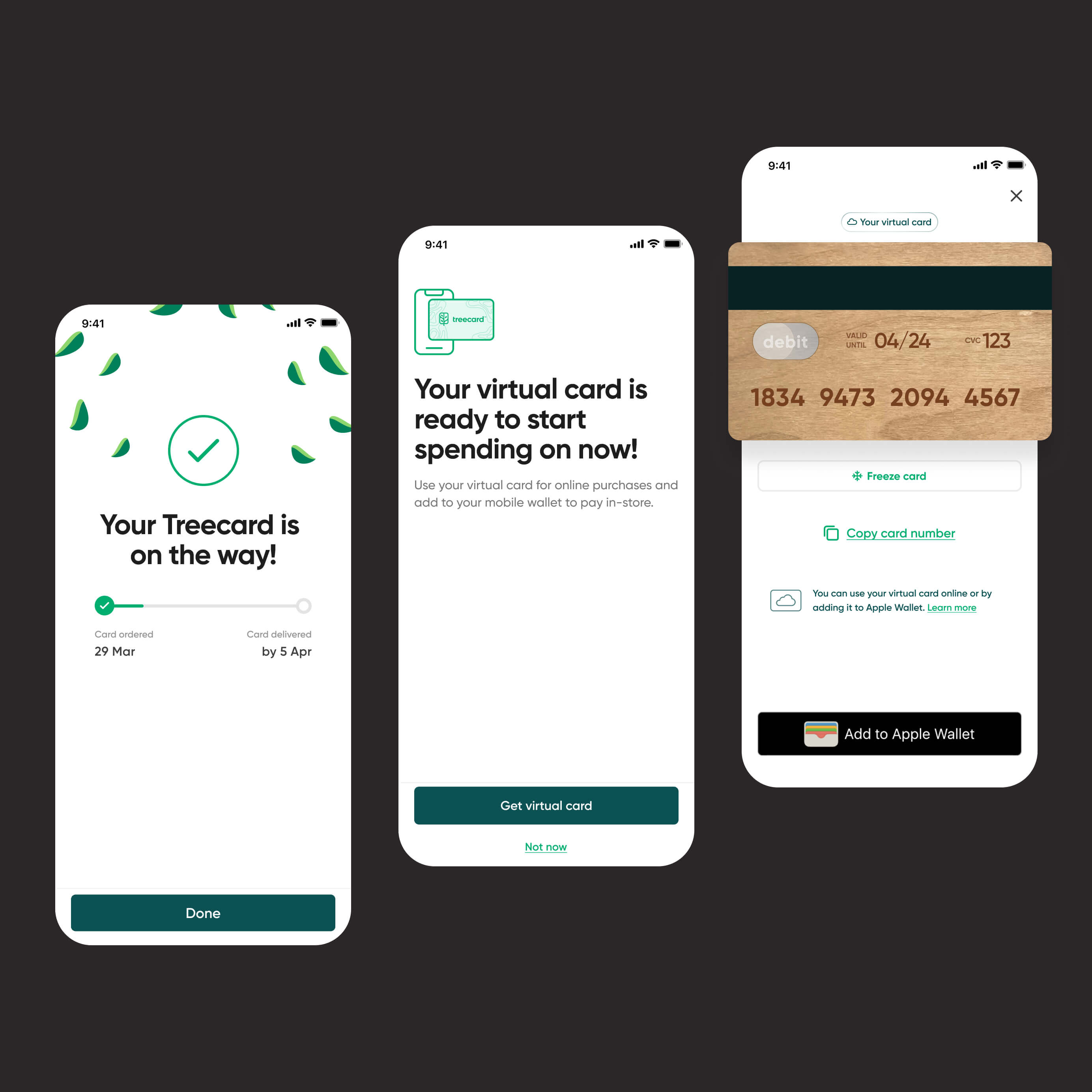
Impact
Created features for users to measure and learn about their impact, like the Tree Valley; a place for users to plant their trees.
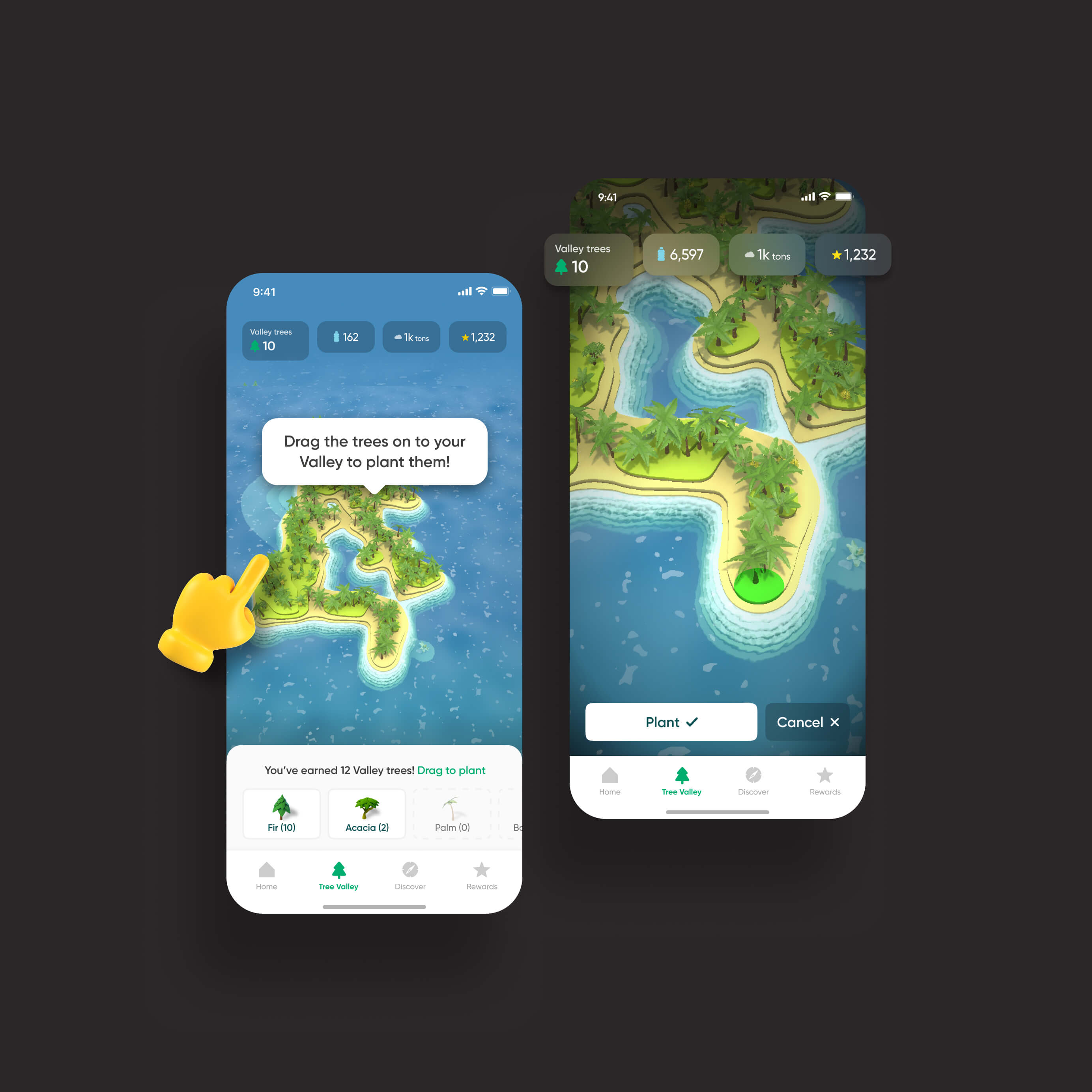
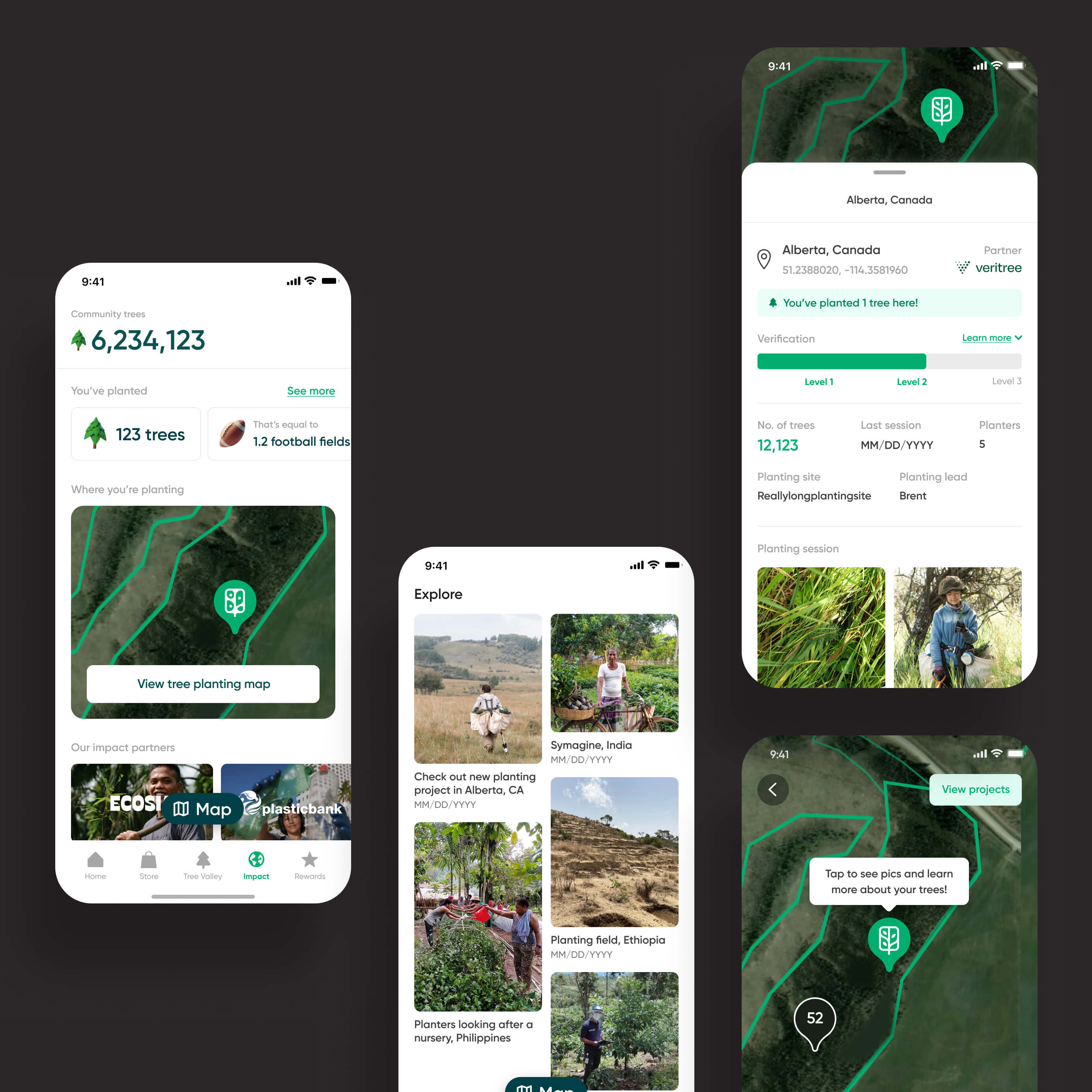

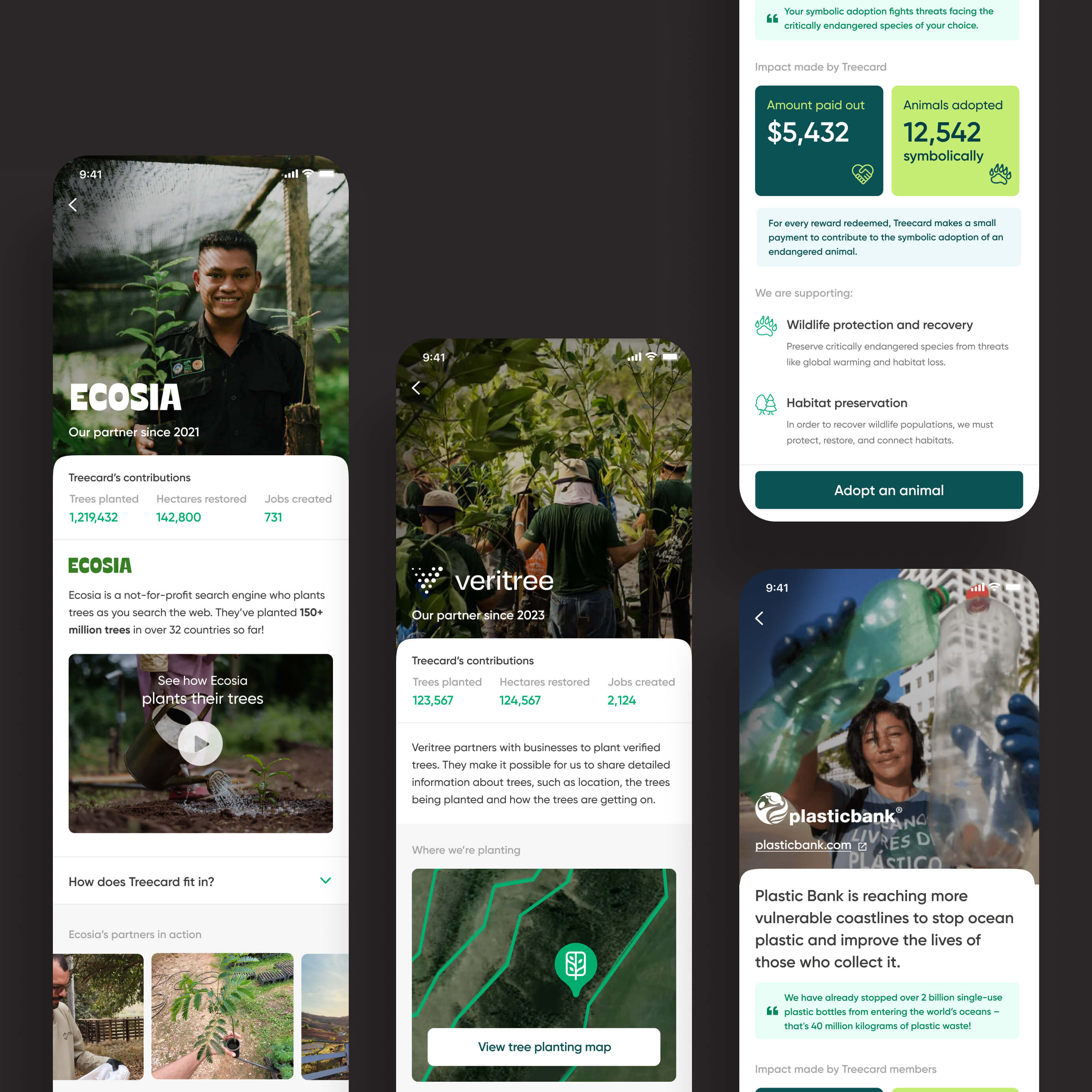
Challenges
High customer acquisition cost (CAC) 💰
With CAC at $90, the card product alone was not sustainable.
High operational costs 💸
Fraud and customer service teams meant our product didn’t scale well.
Slow releases 🐌
Compliance checks slowed down releases, delaying learnings and iterations.
Solutions 💡
Our challenges meant we had less funds for reforestation, so we introduced low-cost entry product, Walk to Plant, which reduced our CAC by 98%, down to just $3.
To generate new revenue, we created a series of tools that ended up earning $45K monthly revenue.
Eventually, we no longer needed the card to create revenue so we sunsetted it.
Learn how we reduced our CAC by 98%
→
Learn how we created 45K monthly revenue
→
Working on something exciting? Get in touch.
CONTACT
sophiereynoldsdesign@gmail.com
© Sophie Reynolds 2025. All rights reserved.
→
Home
Menu
Work
About
Contact
Building Treecard from 0 → 1
Product design, Research, Design system
Designing a sustainable banking experience
I joined Treecard as the founding designer, stepping into a team with a few initial flows created by a freelance designer. Treecard’s mission was to help users make a daily environmental impact with minimal effort, starting with our core offering: a wooden, tree planting debit card in the U.S.


Defining and researching the problem
When I joined the project, the team had already defined the core problem: How can we empower users to make a meaningful impact on the planet in their daily lives, without requiring significant lifestyle changes?
My role was to build on this foundation by analysing the existing research and ensuring the design solutions addressed this challenge effectively:
- Synthesised findings from prior user interviews to deeply understand why users felt their individual efforts were insignificant.
- Identified key friction points in the user journey that made it harder for users to feel their actions were impactful.
- Researched industry benchmarks and competitor products to uncover opportunities for differentiation and innovation.
“It’s hard to have an impact, I don’t have time”
Fighting climate change felt overwhelming to users, requiring a steep learning curve or significant effort/time that they don’t have day-today.
“Anything I do just feels like a drop in the ocean”
Users felt their individual efforts to fight climate change were insignificant, and as a result, questioned whether their actions were even worth doing.
“I don’t know if I’m even making a difference”
Users struggled not seeing the results of their actions, leading to a sense of futility, distrust in the process and ultimately giving up.

Forming a hypothesis
We made assumptions that by making it effortless for users to create a positive impact (without requiring significant changes to their daily routines), we could turn the product into a no-brainer.
By tying something planet positive like tree planting, to an existing action people already do, it makes it incredibly easy to have an impact without having to think.
Our vision was to create a world where:
- Users can make an impact without even thinking about it.
- The volume of users performing these daily actions leading to real, measurable impact.
- Users can see the tangible results of their contributions and feel motivated to continue.
This approach mirrors the success of Ecosia, search engine and our tree planting partner, which has achieved massive adoption with over 20M active users globally.

The wooden debit card
Everyday spending is often passive, making it ideal for aligning with our hypothesis. By linking spending to tangible environmental impact, we created a simple, compelling value proposition.
The wooden debit card also sparked curiosity, acting as a natural conversation starter and driving organic virality. Combined with the clear model (spend $50, plant a tree), this boosted awareness and adoption effortlessly.
As solo designer, I owned the end-to-end design process.

Streamlining the MVP for impact
When I joined Treecard, the initial UI (created by freelancers) was functional but messy. It had inconsistent design patterns, unclear flows, and unnecessary questions that created friction for users. To move quickly, we kept this design for the MVP, focusing on fast release and learning.
I simplified the flow, cutting it down to the essentials to guide users through more efficiently. I worked closely with product and engineering to align on priorities and roll out improvements, ensuring a smoother, more user-friendly experience.
Banking features
We created core banking features to support payment functionality; adding, sending, and receiving money; as well as spend tracking tools to help users monitor transactions.




Onboarding
Developed and heavily tested user-friendly onboarding flows, including KYC compliance.




Impact
Created features for users to measure and learn about their impact, like the Tree Valley; a place for users to plant their trees.




Challenges
High customer acquisition cost (CAC) 💰
With CAC at $90, the card product alone was not sustainable.
High operational costs 💸
Fraud and customer service teams meant our product didn’t scale well.
Slow releases 🐌
Compliance checks slowed down releases, delaying learnings and iterations.
Solutions 💡
Our challenges meant we had less funds for reforestation, so we introduced low-cost entry product, Walk to Plant, which reduced our CAC by 98%, down to just $3.
To generate new revenue, we created a series of tools that ended up earning $45K monthly revenue.
Eventually, we no longer needed the card to create revenue so we sunsetted it.
Learn how we reduced our CAC by 98%
→
Learn how we created 45K monthly revenue
→
Working on something exciting? Get in touch.
© Sophie Reynolds 2025. All rights reserved.
→
Home
About
Contact
Building Treecard from 0 → 1
Product design, Research, Design system
Designing a sustainable banking experience
I joined Treecard as the founding designer, stepping into a team with a few initial flows created by a freelance designer. Treecard’s mission was to help users make a daily environmental impact with minimal effort, starting with our core offering: a wooden, tree planting debit card in the U.S.


Defining and researching the problem
When I joined the project, the team had already defined the core problem: How can we empower users to make a meaningful impact on the planet in their daily lives, without requiring significant lifestyle changes?
My role was to build on this foundation by analysing the existing research and ensuring the design solutions addressed this challenge effectively:
- Synthesised findings from prior user interviews to deeply understand why users felt their individual efforts were insignificant.
- Identified key friction points in the user journey that made it harder for users to feel their actions were impactful.
- Researched industry benchmarks and competitor products to uncover opportunities for differentiation and innovation.
“It’s hard to have an impact, I don’t have time”
Fighting climate change felt overwhelming to users, requiring a steep learning curve or significant effort/time that they don’t have day-today.
“Anything I do just feels like a drop in the ocean”
Users felt their individual efforts to fight climate change were insignificant, and as a result, questioned whether their actions were even worth doing.
“I don’t know if I’m even making a difference”
Users struggled not seeing the results of their actions, leading to a sense of futility, distrust in the process and ultimately giving up.

Forming a hypothesis
We made assumptions that by making it effortless for users to create a positive impact (without requiring significant changes to their daily routines), we could turn the product into a no-brainer.
By tying something planet positive like tree planting, to an existing action people already do, it makes it incredibly easy to have an impact without having to think.
Our vision was to create a world where:
- Users can make an impact without even thinking about it.
- The volume of users performing these daily actions leading to real, measurable impact.
- Users can see the tangible results of their contributions and feel motivated to continue.
This approach mirrors the success of Ecosia, search engine and our tree planting partner, which has achieved massive adoption with over 20M active users globally.

The wooden debit card
Everyday spending is often passive, making it ideal for aligning with our hypothesis. By linking spending to tangible environmental impact, we created a simple, compelling value proposition.
The wooden debit card also sparked curiosity, acting as a natural conversation starter and driving organic virality. Combined with the clear model (spend $50, plant a tree), this boosted awareness and adoption effortlessly.
As solo designer, I owned the end-to-end design process.

Streamlining the MVP for impact
When I joined Treecard, the initial UI (created by freelancers) was functional but messy. It had inconsistent design patterns, unclear flows, and unnecessary questions that created friction for users. To move quickly, we kept this design for the MVP, focusing on fast release and learning.
I simplified the flow, cutting it down to the essentials to guide users through more efficiently. I worked closely with product and engineering to align on priorities and roll out improvements, ensuring a smoother, more user-friendly experience.
Banking features
We created core banking features to support payment functionality; adding, sending, and receiving money; as well as spend tracking tools to help users monitor transactions.




Onboarding
Developed and heavily tested user-friendly onboarding flows, including KYC compliance.




Impact
Created features for users to measure and learn about their impact, like the Tree Valley; a place for users to plant their trees.




Challenges
High customer acquisition cost (CAC) 💰
With CAC at $90, the card product alone was not sustainable.
High operational costs 💸
Fraud and customer service teams meant our product didn’t scale well.
Slow releases 🐌
Compliance checks slowed down releases, delaying learnings and iterations.
Solutions 💡
Our challenges meant we had less funds for reforestation, so we introduced low-cost entry product, Walk to Plant, which reduced our CAC by 98%, down to just $3.
To generate new revenue, we created a series of tools that ended up earning $45K monthly revenue.
Eventually, we no longer needed the card to create revenue so we sunsetted it.
Learn how we reduced our CAC by 98%
→
Learn how we created 45K monthly revenue
→
Working on something exciting? Get in touch.
CONTACT
sophiereynoldsdesign@gmail.com
© Sophie Reynolds 2025. All rights reserved.
→
Home
About
Contact